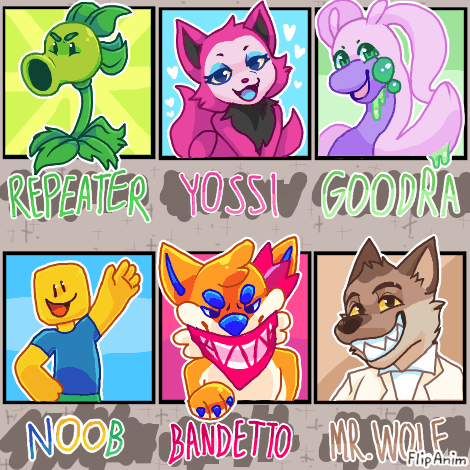
The rise of the “Art of Zoo” pattern via web-based entertainment has uncovered a dim and upsetting underside of web culture. At first harmless by all accounts, this pattern has quickly acquired ubiquity, starting worries about the moral and cultural ramifications of such happiness. Digging into the variables driving its conspicuousness gives urgent knowledge into the dynamics of online behavior, algorithmic impact, and the difficulties in keeping a safe computerized space.
Viral Nature of Internet Trends:
The viral idea of web patterns is a testament to the quick spread of data across online networks. On account of “Art of Zoo,” the term gained forward movement as clients shared their responses and encounters, making a chain response that added to its broad fame. The simplicity of sharing and the interconnectedness of web-based entertainment stages, especially TikTok, played an essential part in propelling the pattern to viral status.
Algorithmic Influence:
Virtual amusement computations are designed to upgrade client responsibility by acquainting content custom-fitted with individual tendencies. In any case, these computations could come up short on the capacity to recognize the respectability of content, provoking the unintentional progression of perilous examples like “Art of Zoo.” The ethical considerations lie in the commitment of electronic diversion associations to do more refined content-isolating frameworks, preventing the unplanned spread of inappropriate material.
Human Curiosity and Sensationalism:
Human interest is the main impetus behind the discovery of recent fads and points, even those that might be dubious. The underlying perky test related to “Art of Zoo” saddled this interest, inciting clients to look for the term. The natural fascination with hair-raising and disputable substances assumed a vital part in the pattern’s underlying multiplication, featuring the requirement for clients to know in their web-based communications.
Lack of Online Safeguards:
The worldwide idea of the web presents difficulties in upholding uniform lawful structures to battle unseemly substance. The shortfall of powerful web-based shields permits content to navigate global lines easily, obscuring the policing efforts. Cooperative worldwide drives are fundamental to laying out complete internet-based guidelines that can prevent and manage the spread of risky behaviors.
Content Creators and Responsibility:
Content makers employ an impact in forming web patterns. Whether purposely or accidentally, their support in and advancement of patterns like “Art of Zoo” contribute to the enhancement of destructive substances. The moral obligation of content makers includes reviewing the substance they draw in with and guaranteeing it lines up with local area rules and moral norms. Powerhouses and pioneers should perceive their part in forming the web talk and act mindfully.
Sensationalism and Clickbait Culture:
Misleading content culture, described by eye-catching and provocative substance, is the main impetus behind the prevalence of “Art of Zoo.” The stunning and untouchable nature of the pattern draws in clients looking for whimsical material, prompting expanded commitment and sharing. The appeal of content that goes amiss from cultural standards highlights the impact of sentimentality in molding web patterns.
Desensitization to Online Content:
Users with a steady stream of online substance might become desensitized to customary limits of worthiness. This desensitization contributes to a quest for progressively outrageous or dubious material, encouraging a climate where stunning patterns like “Art of Zoo” get momentum. Perceiving the expected effect of desensitization is essential for advancing a more careful and knowing web-based culture.
Meme Culture and Humor Dynamics:
Web image culture frequently fills in as a strategy for dealing with stress for tending to awkward or no subjects. With regards to “Art of Zoo,” clients might draw in with the pattern through humor, making images, or sarcastic substance as a method for exploring the distress related to the point. While humor can give a survival technique, it likewise unintentionally adds to the pattern’s fame by encouraging further commitment.
Social Validation and Peer Pressure:
Web-based entertainment stages blossom with the requirement for social approval, where clients look for endorsement and acknowledgment from their companions. The test related to “Art of Zoo” may have provoked clients to take part in the pattern to adjust to social assumptions or gain ubiquity inside their web-based networks. Peer tension inside advanced spaces can altogether impact client conduct, underscoring the significance of advancing positive and capable web-based collaborations.
Shock Value and Rebellion:
The insubordinate idea of online networks, especially among more youthful clients, can prompt the reception of patterns that challenge cultural standards. The shock esteem related to “Art of Zoo” draws in clients who see cooperation as a demonstration of defiance or non-similarity, further propagating the pattern’s prevalence. Perceiving the mental inspirations driving looking for shock esteem is fundamental for creating systems to divert this energy toward additional positive web-based commitment.
Conclusion:
In disentangling the intricacies behind the prominence of “Art of Zoo,” it becomes evident that a diverse methodology is expected to address the difficulties presented by unseemly web-based patterns. From refining web-based entertainment calculations to advancing capable substance creation and client conduct, collected efforts are imperative. By understanding the complexities of online elements, we can strive towards a computerized scene that focuses on security, moral commitment, and the well-being of users.
FAQ’S
- What is the “Art of Zoo” trend, and how did it gain popularity?
The “Art of Zoo” pattern alludes to an upsetting web-based peculiarity including improper substance connected with human-creature collaborations. Its fame flooded because of its harmless appearance via online entertainment stages, igniting interest among clients who then drew in with it, uninformed about its upsetting nature.
- How do social media algorithms contribute to the spread of trends like “Art of Zoo”?
Virtual entertainment calculations assume a pivotal part in molding client encounters by a fitting substance in light of individual inclinations. Nonetheless, these calculations may unintentionally add to the spread of improper substance, as found in the account of “Art of Zoo.” Moral worries emerge concerning the obligation of web-based entertainment organizations to refine content-separating components.
- What are the psychological factors driving users to engage with controversial trends like “Art of Zoo”?
Human interest, desensitization to online substance, and the appeal of sentimentality are key mental variables driving clients to draw in with dubious patterns. The shock worth, disobedience, and companion tension inside web-based networks additionally assume parts in drawing in clients to take part in such patterns.








